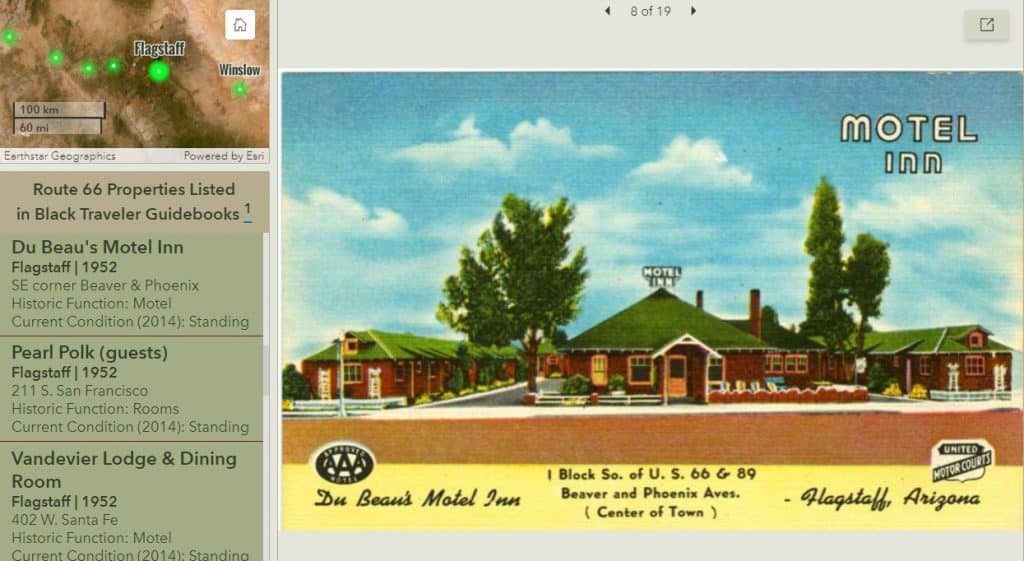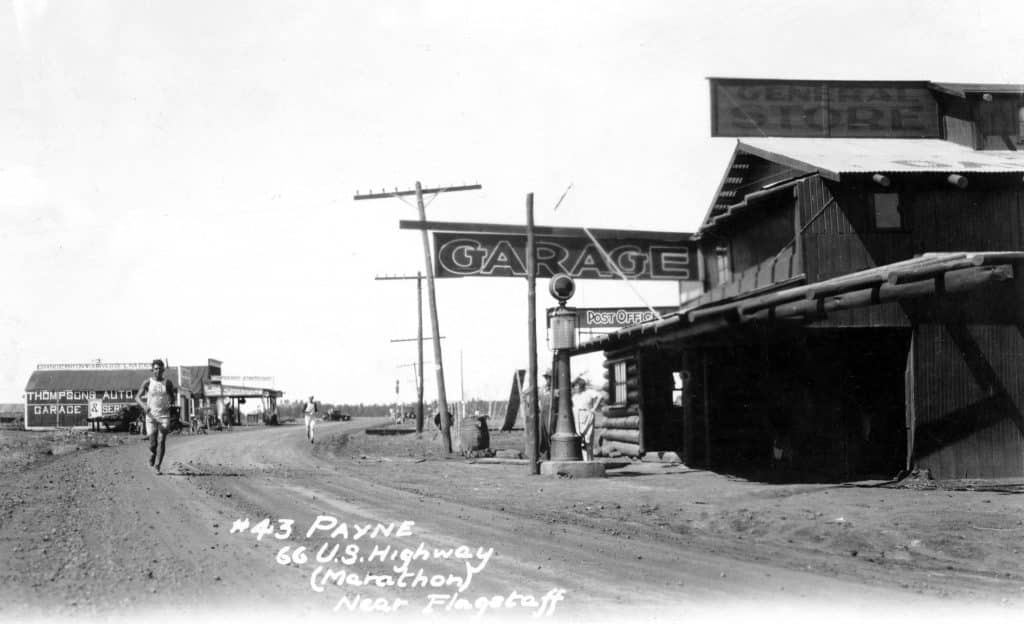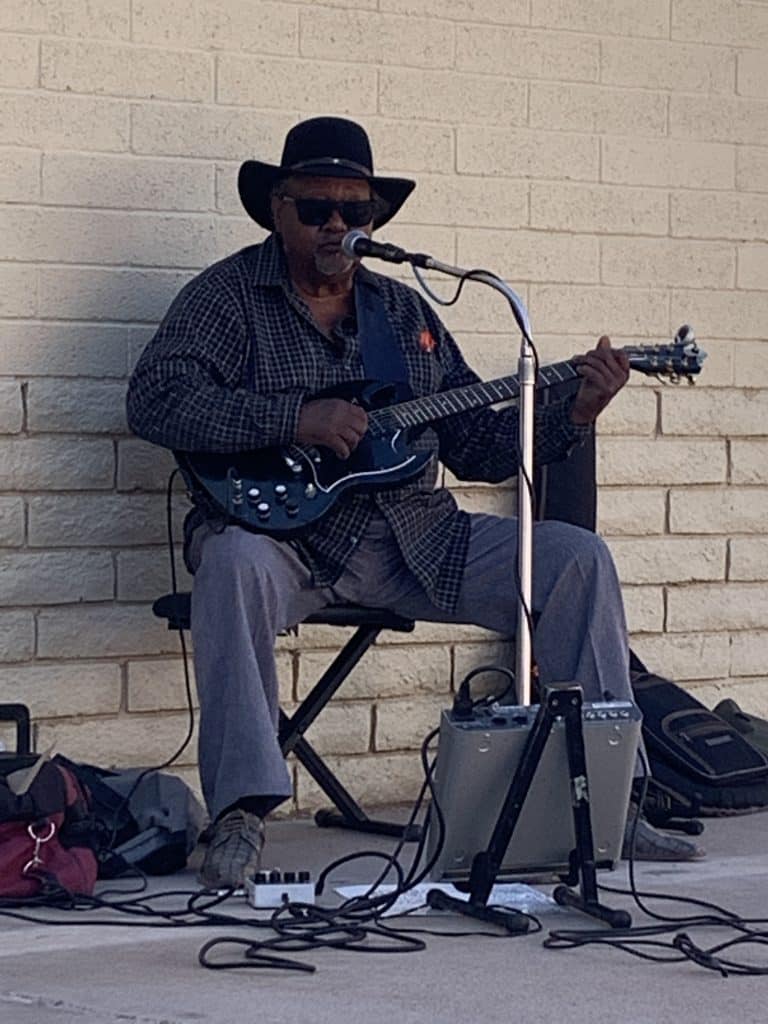Mark Twain once stated, “Travel is fatal to prejudice,” and those who worked on a new Shades of Route 66 online educational exhibit hope it will be, too.
Cline Library Special Collections and Archives recently released Shades of Route 66: Celebrating Diversity along Historic Route 66 in the State of Arizona, an online exhibit that provides a glimpse into the under-documented history and stories of diversity along Route 66 in Arizona. The exhibit, which leverages the storytelling capabilities of ArcGIS StoryMaps, was primarily created by Northern Arizona University students working under the guidance of NAU archivists and faculty members.
Through the use of photographs, oral histories, maps, data and other primary source material, the Shades of Route 66 exhibit provides insight and understanding into the abundant ethnic, cultural and social diversity found within and just beyond the viewshed of Route 66 in Arizona. The project shines a light on the un(der)told stories of ethnic and cultural diversity along the Mother Road.

Ivan Pacheco, a retired dentist pursuing a bachelor’s degree in visual arts, researched and created the story content with Lazarus Melan, who has since received a master’s degree in documentary filmmaking from NAU. Pacheco said he was surprised to see how little is known about the diversity and Route 66.
“I was happy with the amount of information we were able to find and present for the Shades of Route 66 StoryMaps, but it really only skimmed the surface,” Pacheco said. “There is still much to uncover and learn about Route 66 and diversity.”
An example of Pacheco’s work for the project lives on in his oral history interview with lifelong Flagstaff resident Jesse Dominguez. Dominguez grew up in Flagstaff’s Southside neighborhood, and one of his first jobs as a teenager was working at the Pine Springs Café and Motel on E. Route 66. He went on to work for the Flagstaff Housing Authority in 1966 and spent the next 52 years helping others live and thrive in Flagstaff.
Claire Simchuk and Michael Rivera, undergraduate students in the Department of Geography, Planning, and Recreation provided ArcGIS geographic analysis that helped bring Pacheco and Melan’s vision to life. Rivera said he and Simchuk found their GIS work for the Shades of Route 66 project and also informed a senior capstone project they were working on in tandem.
One aspect of the Shades of Route 66 project that benefitted from Rivera’s geographic analysis was the chapter highlighting regional Indigenous

peoples and ancestral lands that Route 66 transects in the state of Arizona. Rivera illustrated the ancestral and current homelands upon which regional Indigenous people have lived for millennia and showed how the historic highway crosses their ancestral lands using slider maps and Indigenous lands maps. These maps help viewers understand the Indigenous perspective and the impact of Route 66 on regional Native Americans.
“Claire and I were allowed the creative space to ask complicated geographic questions relating to Route 66 and northern Arizona as well as the time and resources to perform geographic analysis to answer these questions,” Rivera said. “This gave me confidence going forward in my ability to take on open-ended problems and find solutions in an environment that isn’t as strictly structured or straightforward as a typical class may be.”
Peter Runge, head of Special Collections and Archives and the principal investigator for the Shades project, said it doesn’t just shine a new light on diversity along Route 66 but also aligns with key strategic priorities in the NAU 2025 – Elevating Excellence, including student success, commitment to Indigenous peoples, impactful scholarship and community engagement.
The project has already made a difference for Pacheco and Rivera.
As a result of his internship, Pacheco plans to pursue a degree and career in archives following his May graduation.
“It was so interesting and fascinating to look at historical documents, artifacts and imagery that I am looking to pursue a master of library science degree with an emphasis in archive work when I complete my BFA at NAU,” Pacheco said. “My hope is to integrate both art and history together.”
The Shades project also influenced Rivera’s academic journey.
“It was by chance during a summertime meeting that Mark Manone, chair of Geography, Planning, and Recreation, planted the idea in my head to continue at NAU as a graduate student,” Rivera said. “I truly believe that I am in grad school in part due to my work on the Shades of Route 66 project, and I will always be grateful for the opportunity it gave me.”

The project received valuable guidance from Ricardo Guthrie, former associate professor in NAU’s Ethnic Studies Program, who provided insight and feedback on the content and interpretation of the primary and secondary source material Pacheco and Melan explored.
“The Shades of Route 66 project is a critically important corrective to the national definitions and debates over what democracy means in a multiracial society structured in inequality,” Guthrie said. “Route 66 provided avenues for escape, transformation and possibility, but not gold at the end of the rainbow. It was the hope and the dream for millions who imagined a better life—and it showed the resilience of those who turned a negative into a positive.”
The Shades of Route 66 project, which was funded by a generous grant from the Historic Route 66 Association of Arizona, set out to begin to fill a historical gap.
“The project now situates Cline Library Special Collections and Archives nicely to tell a more holistic story of Route 66 as we look forward to the centennial celebration of the highway in 2026,” said archivist and co-principal investigator Sean Evans.
The online exhibit has opened the door for additional discovery and documentation around the diverse people, communities and activities of historic Route 66 in Arizona. Special Collections and Archives archivists plan to continue that effort. If you have a story or name to share or recommend for consideration, please email Special.Collections@nau.edu.
Laura Taylor | Cline Library




